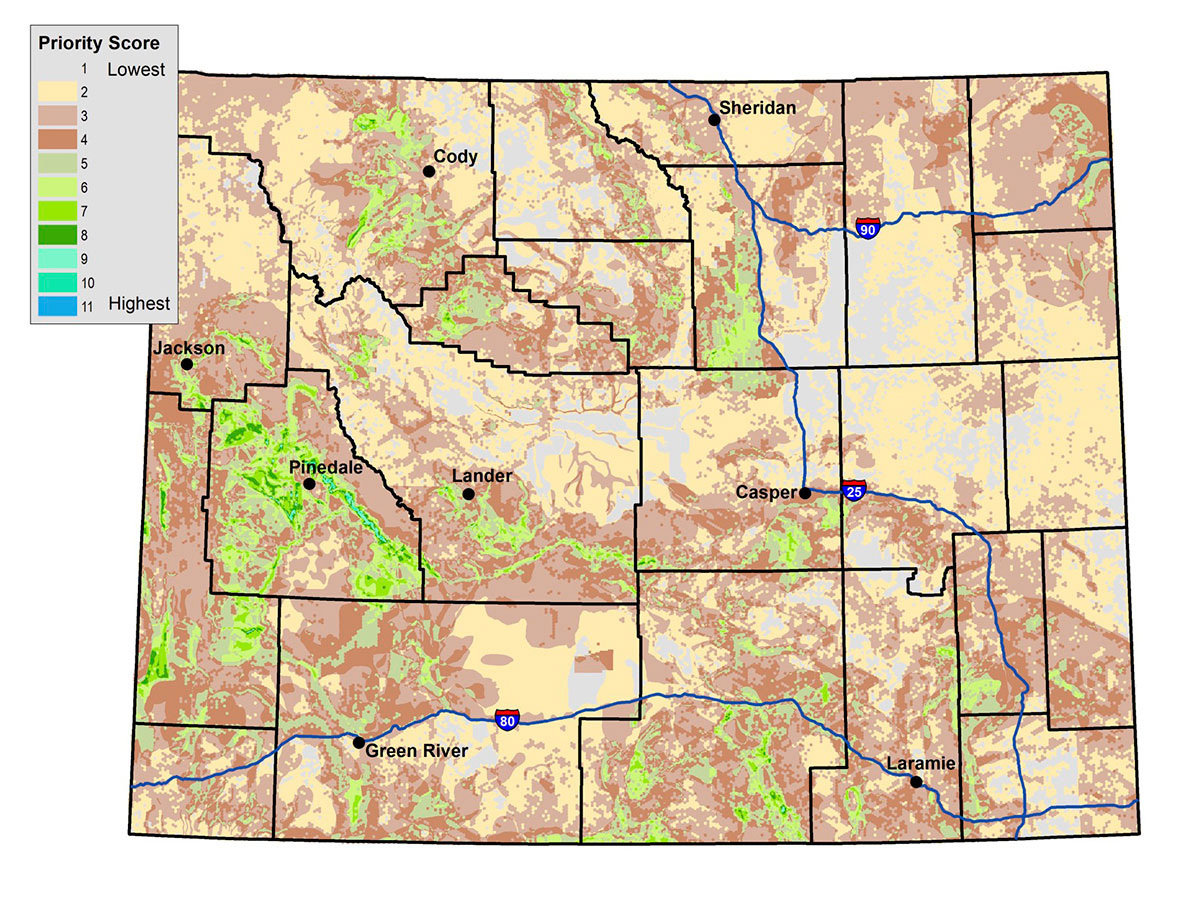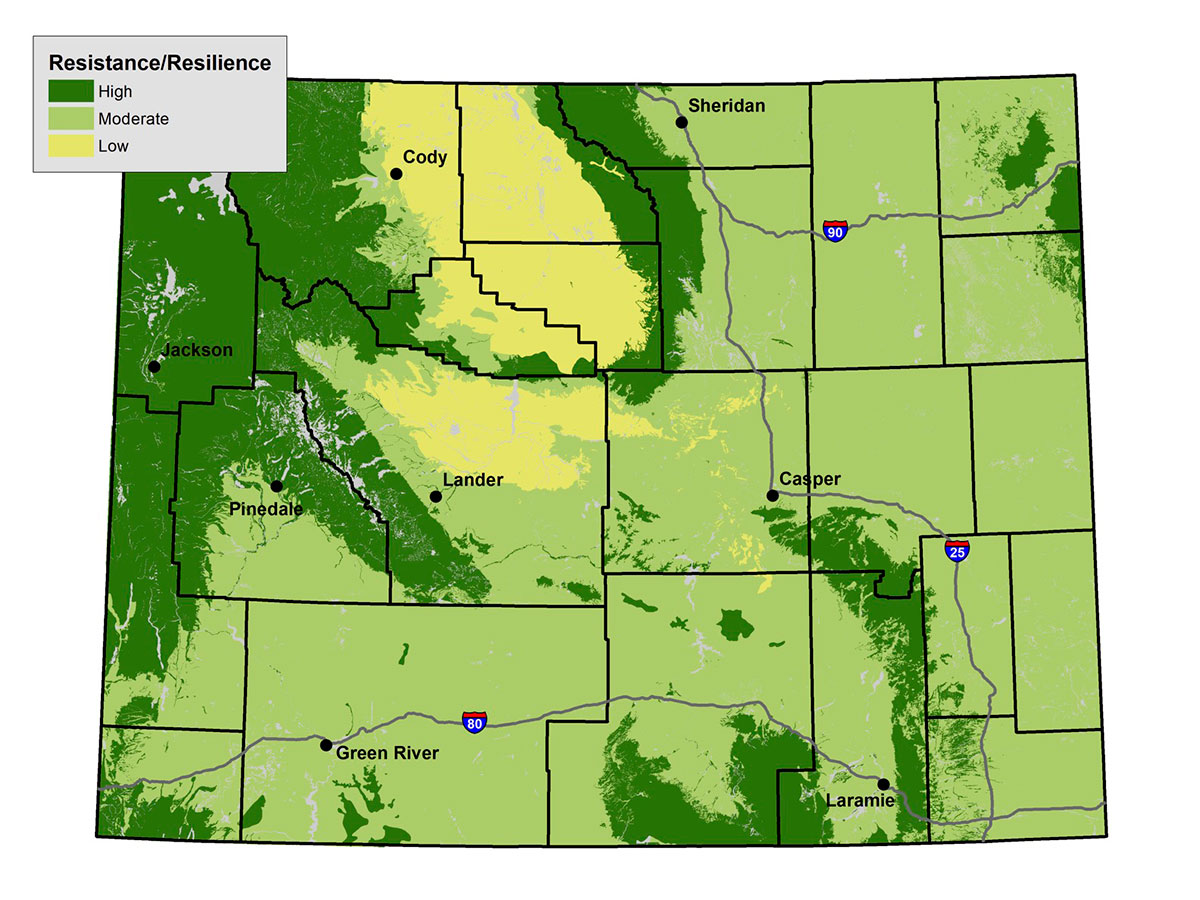The WYldlife Fund is proud to help connect donors with their particular passion for wildlife through the facilitation of restricted gifts. If you have a particular area of interest that you would like to see your generous donation restricted to, please reach out to us at (307) 316-3863. The WYldlife Fund is passionate about directing donor funds to initiatives and projects of most interest. Here are a few areas of focus for your consideration.
Wildlife Crossings
Well over 6,000 large mammals die on Wyoming’s roadways each year. In addition to loss of wildlife, this results in vehicular damage and human injury expenses totaling $50 million annually. The WYldlife Fund supports the construction of wildlife crossings to mitigate these numbers and save wildlife. Wildlife crossings produce immediate and positive impacts for wildlife. The Wyoming Game and Fish Commission in partnership with the Wyoming Department of Transportation and key stakeholders have designated the projects of greatest importance across the state. Reach out to us today to learn more about these critical projects and how your donation can help keep wildlife and drivers on the go.
Invasive Annual Grasses
Invasive Annual Grasses (IAG) including cheatgrass, medusahead and vententata pose an imminent threat to Wyoming’s wildlife and wildlife habitats. The Wyoming Game and Fish Department has initiated a major undertaking to identify the most important wildlife habitats in the state. The Department then coupled the important wildlife habitats map with a statewide Resistance and Resilience model which identifies areas that are likely to respond well to treatment (high R&R is good, low is bad). Now that we have the most important habitats identified, and have identified areas that are receptive to treatment, the Department and partners need to determine the current “state of the state” for IAGs in Wyoming.
This involves 2 steps:
- Documenting the presence (or absence) of IAGs in WY and,
- Documenting the rate at which they occur (prevalence) within infested sites
This presence and prevalence data will feed into a strategic plan that intends to “hold the line” against invasives in Wyoming’s most important habitats. We will allocate funds to projects that occur in the most important wildlife habitats and have the highest likelihood of success. This master plan will inform treatment actions for at least the next 10 years. This project represents a sophisticated system to identify and allocate funding to projects occurring in the most important habitats and containing the highest likelihood of success.
If you would like more information on how your dollars can help us battle IAGs and restore important wildlife habitat, reach out to us today!
Wildlife Friendly Fencing-making fence modifications for conservation
Wildlife unfriendly fences can interrupt wildlife habitat connectivity and migration routes and create many other hazards for wildlife.
In a 2020 Wyoming study, each radio-collared mule deer encountered fences an average of 119 times each year and pronghorn antelope encountered fences at more than twice that rate, about 248 times per year. Pronghorn and mule deer alter their natural movement nearly 40% of the times they encounter fences. Such avoidance of fences can drive animals away from high-quality resources and reduce habitat use effectiveness.
A study of antelope, mule deer and elk mortality along 600 miles of road (1,200 miles of fence) in Utah and Colorado found 0.4 mortalities per year per mile of fence or one dead antelope every year per 5.6 miles of fence; one dead mule deer every year per 7.8 miles of fence and a dead elk every year for every 10.3 miles of fence. This equates to one dead animal every 2.5 miles of fence.
A 2020 team of researchers from the University of California at Berkeley produced one of the first large scale fence density models in the western US that estimated that there are more than 621,000 miles of fences, without including urban and suburban property fences. They also found that nowhere in the western U.S. are you more than 30 miles away from a fence, with the average distance being 1.9 miles from any given location.
Woven-wire fence topped with a single strand of barbed-wire is the most lethal fence type; ungulate’s legs are easily snared and tangled between the barbed-wire and rigid woven-wire. About 70% of all mortalities were on fences higher than 40”. Most animals (69% of juveniles and 77% of adults) died by getting caught in the top wires while trying to jump a fence.
Contact us today to learn more about how you can help with this vital initiative.
Research
Wyoming is home to cutting edge wildlife research. Sound research provides data for informed decision making and strategic action. The WYldlife Fund seeks to advance cutting edge research that supports Wyoming’s dynamic ecosystems and wildlife. Depending on your area of interest, we will supply reputable research projects to support including but not limited to: habitat for particular species of interest, chronic wasting disease, migration, and aquatic invasive species.
If you are interested in supporting Wyoming wildlife research we would be happy to direct your dollars to an area of your choosing.
Aquatic Invasive Species and Fish Passage
Aquatic invasive species (AIS) are organisms that are not native and cause significant harm to an ecosystem when introduced. Harmful impacts can occur to municipal water supplies, recreation, agriculture, aquaculture, and other commercial activities. Currently, Wyoming’s waters are pristine and no AIS have been detected. Let’s keep it that way! AIS would pose a significant threat to Wyoming’s fisheries.
Fish passage is important for the protection and restoration of migrating fish and their habitats. Fish passage projects restore, open, and maintain habitat for fish by removing or finding ways around barriers to fish passage. Fish need connections between and within waterways during various life stages to reproduce, feed, and contribute to their ecosystems by recycling the nutrients they take in.
If you have a passion for our waterways and fisheries The WYldlife Fund can help drive your dollars to a meaningful aquatics project!
Education
Projects driven, people focused. The WYldlife Fund is dedicated to inspiring the next generation of active and ethical wildlife enthusiasts. Our youth are the future, and we want to give them opportunities to unplug from technology and plug in to the great outdoors. We actively support and engage with the Wyoming Game and Fish Department’s Inspire a Kid program to do just this.
If you are interested in investing in the next generation of conservation leaders, please let us know! We would love to discuss these impactful opportunities with you.








